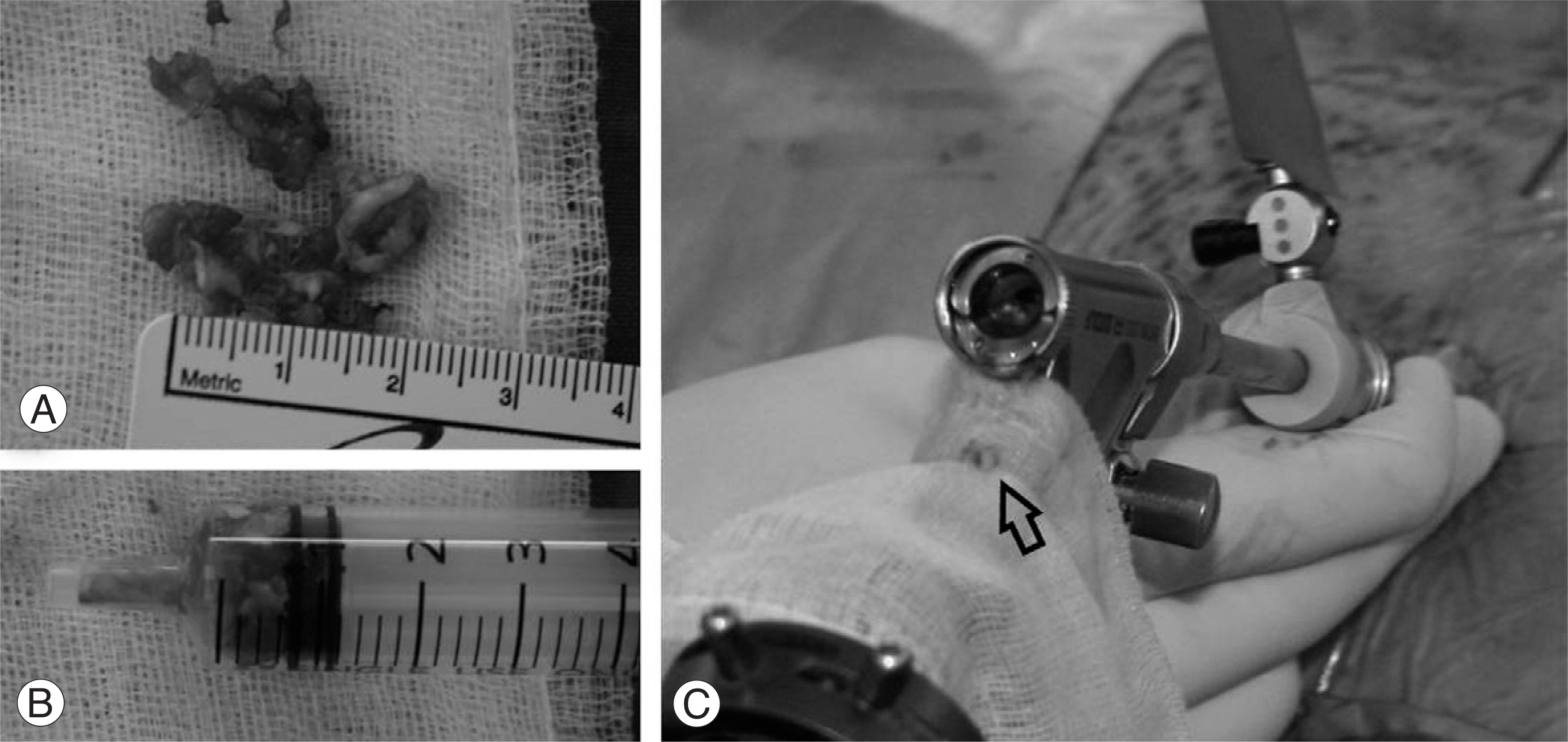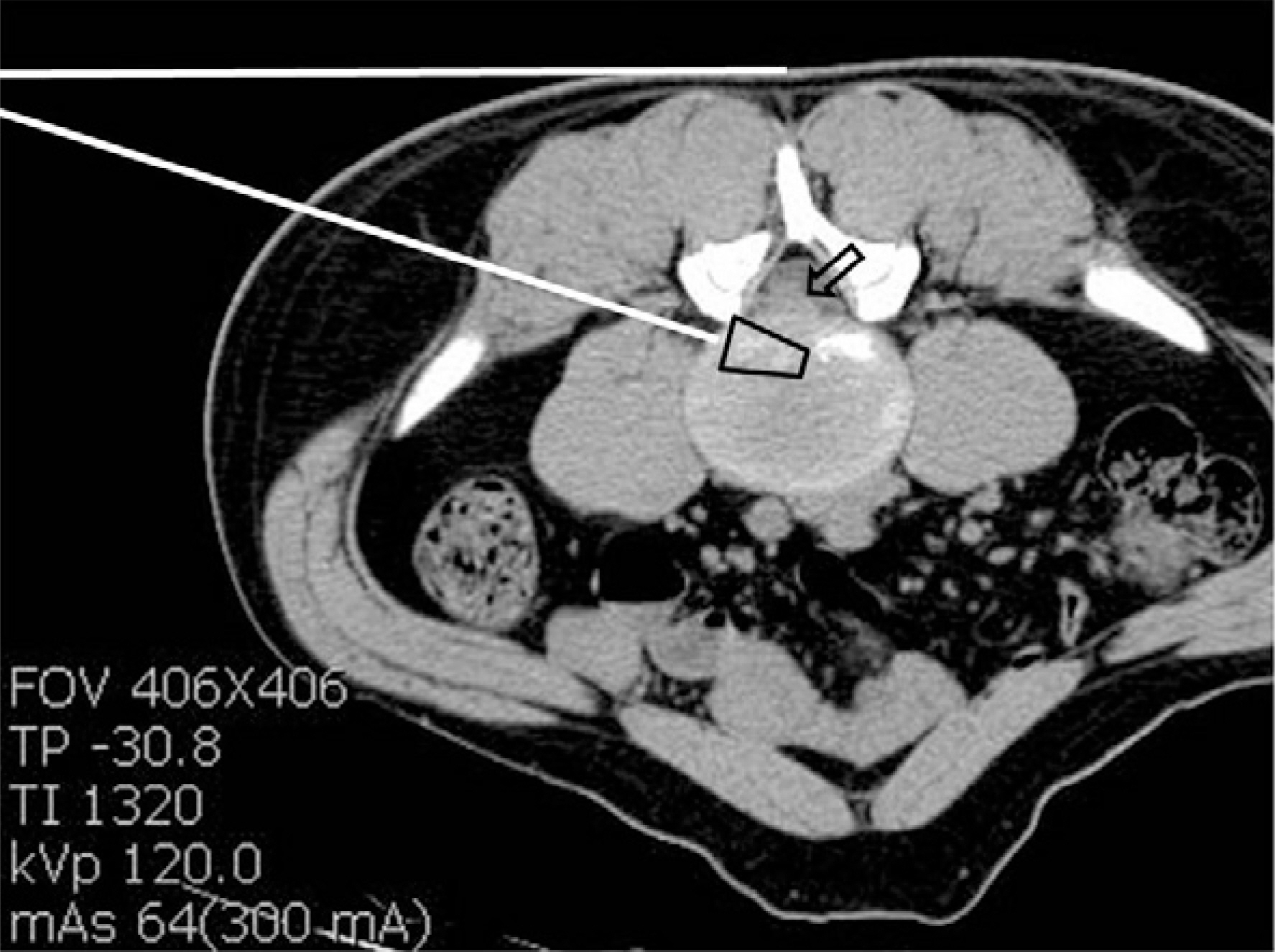J Korean Soc Spine Surg.
2009 Sep;16(3):186-193. 10.4184/jkss.2009.16.3.186.
Comparative Evaluation of Percutaneous Endoscopic Discectomy and Microdiscectomy Using Tubular Retractor System at L4-5 Level
- Affiliations
-
- 1Department of Orthopedic Surgery, Chung-Ang University College of Medicine, Seoul, Korea. ksong70@cau.ac.kr
- 2Department of Orthopedic Surgery, Jincheon Sungmo Hospital, Chungcheongbuk-do, Korea.
- KMID: 2003113
- DOI: http://doi.org/10.4184/jkss.2009.16.3.186
Abstract
- STUDY DESIGN: A prospective, non-randomized study
OBJECTIVES
To evaluate the early clinical results of percutaneous endoscopic lumbar discectomy (PELD) and microdiscectomy (MD) using a tubular retractor. SUMMARY OF THE LITERATURE REVIEW: There are few reports comparing the clinical results of different minimal invasive surgical procedures for disc herniation.
MATERIALS AND METHODS
Out of 41 patients who underwent a discectomy at the L4-5 level, 16 patients (Group I) underwent PELD and 25 patients (Group II) underwent MD. The surgical techniques were based on the patient's selection. The characteristics of the operation(operation time, time for C-arm, amount of removed disc) were compared with the clinical outcomes by evaluating the SLR (straight leg raising test), leg VAS (visual analogue scale), ODI (Oswestry Disability Index), hospital day, changes in disc height.
RESULTS
Group I showed a larger amount of disc removed and exposure time for the C-arm than group II (p<0.05). However, the hospital day was shorter in group I than in group II (p<0.05). There were no differences in the leg VAS, ODI, the change in disc height and surgery time between the two groups at the last follow up. One case in group I had a neuropraxia of the L5 root that had recovered fully at postoperative 3months. In group II, there was one case of a postoperative hematoma and 2 cases of a dural tear.
CONCLUSION
Although the early clinical outcomes were similar in both groups, group I showed a larger amount of disc removed and more exposure time to radiation but a shorter hospital stay.
Keyword
Figure
Cited by 2 articles
-
Clinical Results about More than 5 Years Followup after Open Discectomy
Jae-Wan Soh, Jae Chul Lee, Hyung-Mo Goo, Hae-Dong Jang, Byung-Joon Shin
J Korean Soc Spine Surg. 2011;18(3):140-145. doi: 10.4184/jkss.2011.18.3.140.Fistula Formation Between the Disc and Dura after Percutaneous Endoscopic Lumbar Discectomy - A Case Report -
Hak Sun Kim, Hyoung Bok Kim, Hoon-Jae Chung, Jea Ho Yang
J Korean Soc Spine Surg. 2018;25(4):180-184. doi: 10.4184/jkss.2018.25.4.180.
Reference
-
1). Davis H. Increasing rates of cervical and lumbar spine surgery in the United States, 1979-1990. Spine. 1994; 19:1117–1123.
Article2). Dandy WE. Loose cartilage from intervertebral disk simulating tumor of the spinal cord. By Walter E. Dandy, 1929. Clin Orthop Relat Res. 1989; 238:4–8.3). Kambin P, Brager MD. Percutaneous posterolateral discectomy. Anatomy and mechanism. Clin Orthop Relat Res. 1987; 223:145–154.4). Maroon JC, Abla A, Bost J. Association between peridural scar and persistent low back pain after lumbar discectomy. Neurol Res. 1999; 21:43–46.
Article5). Smith L. Enzyme dissolution of the nucleus pulposus in humans. JAMA. 1964; 187:137–140.
Article6). Hijikata S. Percutaneous nucleotomy: A new concept technique and 12 years experience. Clin Orthop Relat Res. 1989; 238:9–23.7). Smith MM, Foley KT. Microendoscopic discectomy system: surgical technique and initial clinical results. Tech Neurosurg. 1997; 3:301–307.8). Xiaotao W, Suyang Z, Zubin M, Hui C. Microendoscopic discectomy for lumbar disc herniation: Surgical technique and outcome in 873 consecutive cases. Spine. 2006; 31:2689–2694.9). Anthony T, Christopher A. Minimally invasive techniques for the management of lumbar disc herniation. Orthop Clin N Am. 2007; 38:363–372.10). Casper GD, Hartman VL, Mullins LL. Laser assisted disc decompression: an alternative treatment modality in the Medicare population. J Okla State Med Assoc. 1996; 89:11–15.11). Hermantin FU, Peters T, Quartararo L, Kambin P. A prospective, randomized study comparing the results of open discectomy with those of video-assisted arthroscopic microdiscectomy. J Bone Joint Surg Am. 1999; 81:958–965.
Article12). Mochida J, Nishimura K, Nomura T. Appropriate procedures of posterior herniotomy and percutaneous nucleto-my in lumbar disc herniation. Rinsho Seikei Geka. 1994; 29:423–430.13). Yeung AT, Tsou PM. Posterolateral endoscopic excision for lumbar disc herniation: Surgical technique, outcome, and complications in 307 consecutive cases. Spine. 2002; 27:722–731.14). Chung JY, Lee JJ. Percutaneous endoscopic discectomy for lumbar disc herniation. J Korean Soc Spine Surg. 2007; 14:212–219.
Article15). Kang YH, Lee WS, Yune SH. Comparison of the results between standard discectomy and microdiscectomy of the herniated lumbar disc. J Korean Soc Spine Surg. 2000; 7:228–233.16). Matsui H, Kitagawa H, Kawaguchi Y, Tsuji H. Physiologic changes of nerve root during posterior lumbar discectomy. Spine. 1995; 20:654–659.
Article17). Hijikata S, Yamagishi M, Nakayama T. Percutaneous discectomy: A new treatment method for lumbar disc herniation. J Toden Hosp. 1975; 5:5–13.18). Onik G, Helms CA, Ginsberg L, Hoaglund FT, Morris J. Percutaneous lumbar discectomy using a new aspiration probe. AJNR. 1985; 6:1137–1140.19). Onik G, Shang YL, Maroon JC. Automated percutaneous biopsy in postoperative diskitis: a new method. AJNR. 1990; 11:391–393.20). Nakagawa H, Kamimura M, Uchiyama S, Takahara K, Itsubo T, Miyasaka T. Microendoscopic discectomy (MED) for lumbar disc prolapsed. J Clin Neurosci. 2003; 10:231–235.21). Kambin P, Sampson S. Posterolateral percutaneous suction-excision of herniated lumbar intervertebral discs. Report of interim results. Clin Orthop Relat Res. 1986; 207:37–43.22). Kikuchi S, Hasue M, Nishiyama K, Ito T. Anatomic features of the furcal nerve and its clinical significance. Spine. 1986; 11:1002–1007.
Article23). Schick U, Dohnert J, Richter A, Ko¨nig A, Vitzthum HE. Microendoscopic lumbar discectomy versus open surgery: an intraoperative EMG study. Eur spine J. 2002; 11:20–26.
Article
- Full Text Links
- Actions
-
Cited
- CITED
-
- Close
- Share
- Similar articles
-
- Microendoscopic Discectomy (MED) for Lumbar Disc Herniation
- Comparative Study of the Outcomes of Percutaneous Endoscopic Lumbar Discectomy and Microscopic Lumbar Discectomy Using the Tubular Retractor System Based on the VAS, ODI, and SF-36
- Comparative Study of the Outcomes of Unilateral Biportal Endoscopic Discectomy and Tubular Microdiscectomy Based on the Visual Analogue Scale, Oswestry Disability Index, and Short-form 36
- Use of an Internal Retractor for Percutaneous Full-Endoscopic Resection in Cervical Intervertebral Disc Herniation with a Posterior Approach
- Percutaneous Endoscopic Discectomy Compared to Microsurgical Discectomy: Preliminary Results




